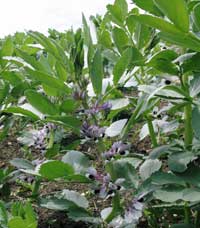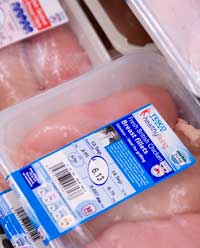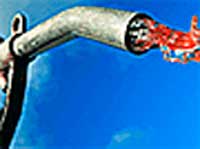Peas and beans to play bigger role in poultry rations

Feed ingredients, fat content and biofuel by-products all came under the microscope at the recent World’s Poultry Science Association (WPSA) meeting in Belfast. Ken Randall reports
Home-grown peas and beans could play a greater role in poultry diets and reduce the UK’s dependence on imported soya, according to Helen Masey O’Neill from Nottingham University.
A recent study involving Ross broilers had confirmed that legumes were a valuable source of protein to poultry and had sought to determine which varieties were most suitable.
The trial had looked at six varieties of beans and seven varieties of peas, all selected for having low levels of trypsin inhibitors – the naturally-occurring chemicals that interfere with efficient digestion in the bird, Dr O’Neill explained.
The research found that peas had a significantly better digestibility of crude protein and amino acids than beans. At the same time there was no difference in protein digestibility between the different varieties of peas, or the different varieties of beans.
“However, there is considerable variability in trypsin inhibitor activity between pea samples, so evaluating peas for this variable is essential for their use in diets for non-ruminants,” she added.
Dr O’Neill also acknowledged that ensuring continuity of supply on a commercial scale was likely to be more of a impediment to widespread use of UK-grown legumes under current circumstances than purely economic considerations.
The work was funded through DEFRA, and stemmed from the UK feed industry being massively reliant on imported soya for dietary protein.
FACING THE FAT FACTS
 Free-range broilers had no less fat than intensively reared ones, reported Ian Givens of Reading University. Nor was there any evidence that modern breeds of chicken contained any more fat than 20 years ago.
Free-range broilers had no less fat than intensively reared ones, reported Ian Givens of Reading University. Nor was there any evidence that modern breeds of chicken contained any more fat than 20 years ago.
According to Prof Givens, trends on poultrymeat consumption have been ever upward since the Second World War, and people were now consuming about 0.5kg of poultrymeat per head a week on average.
“It’s consumed by 85% of the population, so it’s a really important dietary ingredient. We have to be sure we understand what it contributes to the diet.”
He also tabled a number of newspaper articles resulting from claims made by other researchers that modern poultrymeat contained much more fat than 20 years ago.
“It has been suggested that if you go back to 1980, typical poultrymeat contained 5-7% fat, whereas now it is about 22-23% fat.
“It has also been suggested that if people consumed free-range birds they would be better off because they would be much less fatty.”
But his research had looked at the fatty acid composition of retail chicken and found “little or no evidence of a nutritionally superior lipid profile in the free-range bird”.
Prof Givens maintained it was difficult to make realistic comparisons with 20 years ago, but questioned whether fat levels in skinless breast meat could have been significantly lower then, when skinless breast meat currently only had a fat content of 2.4%.
There might be a difference in the abdominal fat pad, “but no-one eats a whole bird”, he said.
BIOFUEL BY-PRODUCTS
 In anticipation of the expected future growth in biodiesel production in the UK, Linda Griffiths from Queens University Belfast had researched the potential for using the principal by-product, glycerol, as an energy source in broiler diets.
In anticipation of the expected future growth in biodiesel production in the UK, Linda Griffiths from Queens University Belfast had researched the potential for using the principal by-product, glycerol, as an energy source in broiler diets.
A primary concern was whether it could have an adverse effect on meat quality.
Previous research had shown that substituting glycerol in broiler diets at up to around 70g/kg had resulted in an improved feed conversion ratio, she said.
“However, the effect on broiler meat quality of including glycerol in broiler diets is unknown.”
Ms Griffiths formulated a series of rations with an apparent metabolisable energy (AME) ranging from 13.3MJ/kg dry matter to 14.4MJ/kg, using combinations of glycerol and the relatively low-nutrient-density ingredient, wheat pollard (middlings).
The resulting breast meat was tested for drip loss, cooking loss, shear force tenderness and pH, and showed that neither including glycerol or wheat pollard in the diet, nor varying the AME level of the diet, had any effect on meat quality.

